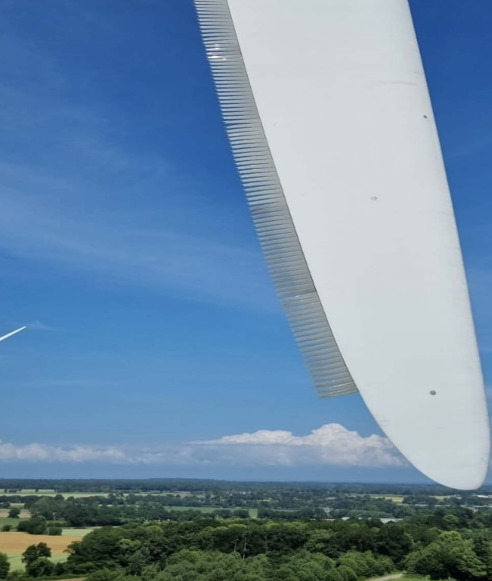FaST work: smart new site-noise tool saves time, money & energy
In the previous months, we have been closely examining the FeatherEdge serration technology developed by Biome Renewables with great interest. Our comprehensive analysis of this blade addition indicates significant noise reduction capabilities, surpassing current state-of-the-art technology. This innovation has the potential to transform the wind industry by reducing noise impact of wind energy projects on neighbouring populations, in turn leading to increased flexibility in design and the potential for maximising energy generating capacity.
The influence of different noise assessments on the viability, risk and generating capacity of wind farm developments is frequently underestimated. Minor adjustments in environmental noise limits or assessment methodologies can lead to significant variations in renewable energy generation and development opportunities. A mere 2 to 3 dB change can alter a project’s scale by as much as 40%, due to the need for increased separation distances as a primary noise mitigation strategy.
As wind energy adoption grows, managing cumulative noise impacts becomes crucial, sometimes imposing substantial noise constraints.
The advent of variable speed, pitch-regulated wind turbine technology has led to an efficient design in terms of noise emissions from modern turbines, leading to low noise emissions at low wind speeds and then increasing to a noise emission peak at or close to the turbine rated power, with noise emissions then either staying constant or decreasing at the highest wind speeds. Noise emissions are now dominated by the trailing edge of the turbine blade.
The next technological step was the creation of Serrated Trailing Edge (STE) technology, typically providing an extra 2 dB(A) reduction at source at no energy cost, and these are now available as standard on most commercial turbine models. This noise reduction has compensated for the potential increases in noise which may have been the consequence of the increasing size of modern turbines with rotor diameter in excess of 100 m. Our previous understanding was that STE blades represented the state-of-the art, and that further reduction could only be obtained in practice through the use of noise-reduced operational modes, which slow the turbine rotation and therefore reduce energy generation.

The FeatherEdge technology aims to further reduce trailing edge noise through targeted noise cancellation mechanisms.
Initial tests, conducted by Deutsche WindGuard on a 3 MW capacity turbine, compared standard STE-equipped blades with FeatherEdge blades. Measurements adhered to the IEC 61400-11 (ed. 3) standard. Key findings include:
The observed frequency shift is crucial, given the effects of noise propagation over distance. Higher frequency sounds dissipate more rapidly than lower frequencies, meaning FeatherEdge’s benefits become more pronounced over greater distances. Our modeling, based on ISO 9613-2 standards, indicated:
Based on the observations from Deutsche WindGuard that the introduction of FeatherEdge did not have an effect on the power generation of the turbine tested, the above initial results, if confirmed, would equate to an unprecedented level of noise reduction relative at no cost to the generated power.
This technology could therefore represent a potential “game-changer” in turbine operational noise control of aerodynamically generated noise.
In the UK, the installed onshore wind capacity recently reached 15 GW. The possibility of retro-fitting this technology to existing windfarms which are constrained in their operation due to noise could therefore be potentially be very large. This is in addition to the potential for newly designed and developed sites.
We would welcome further confirmed data showing tested results over the whole wind speed range using the FeatherEdge technology, with a range of modern wind turbine models. This would enable us to recommend this technology to provide additional effective noise mitigation where required and design future noise-optimised wind farms. In conclusion, FeatherEdge represents a pivotal advancement in wind turbine technology, offering unprecedented noise reduction without sacrificing energy output. This innovation promises to enhance the feasibility and sustainability of wind energy projects, reinforcing our commitment to a cleaner, quieter, and more energy-efficient future and could become the standard STE technology in time.